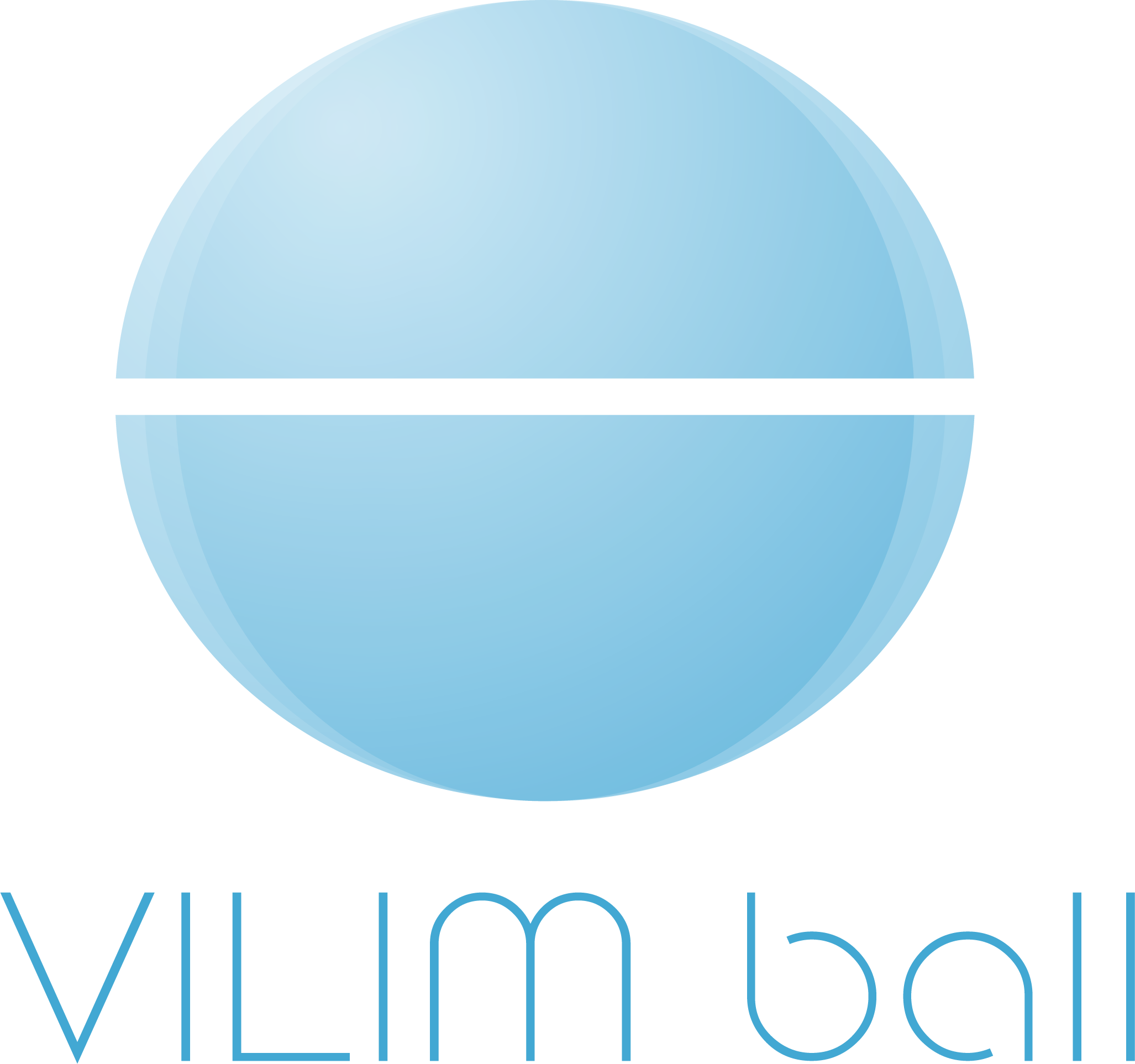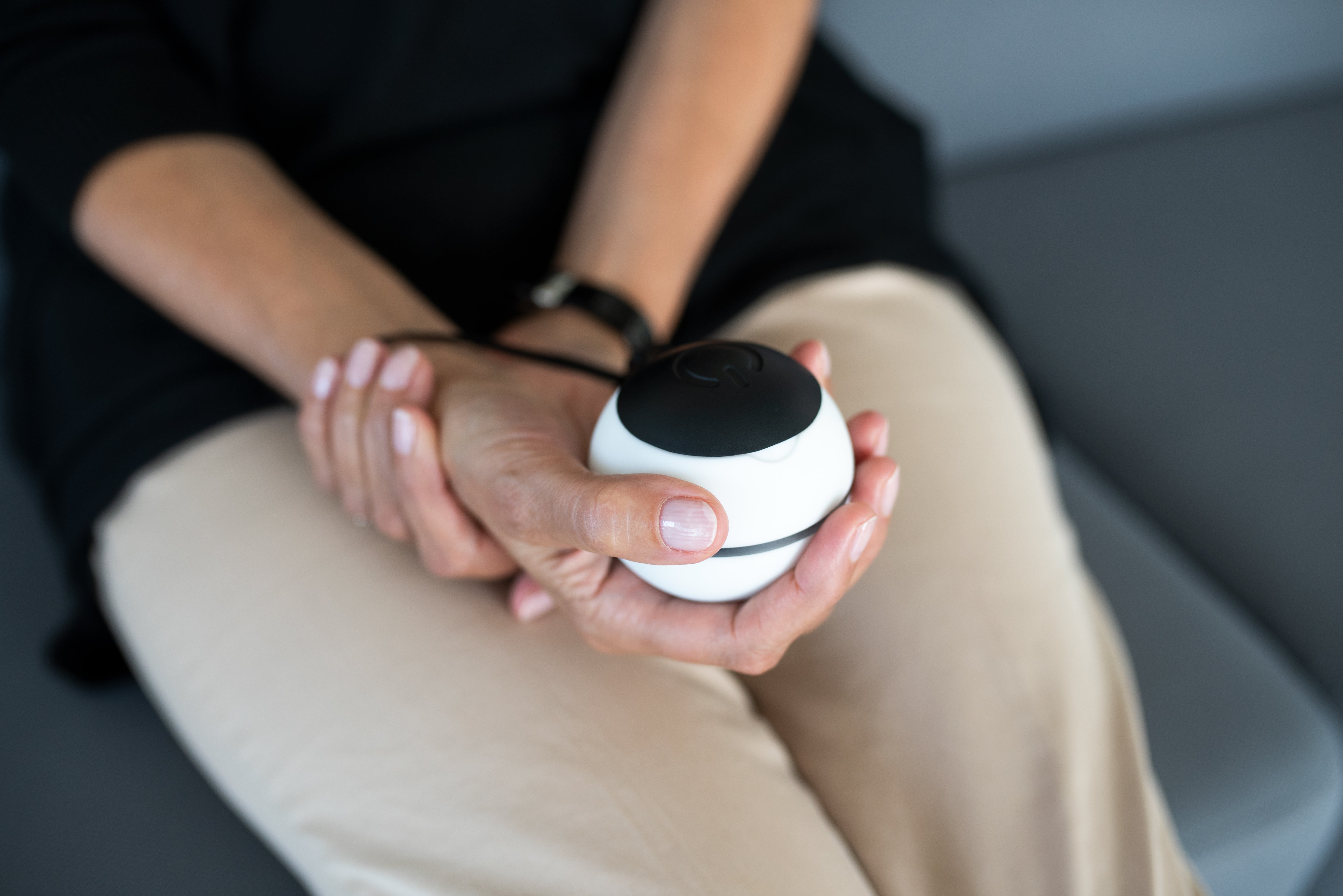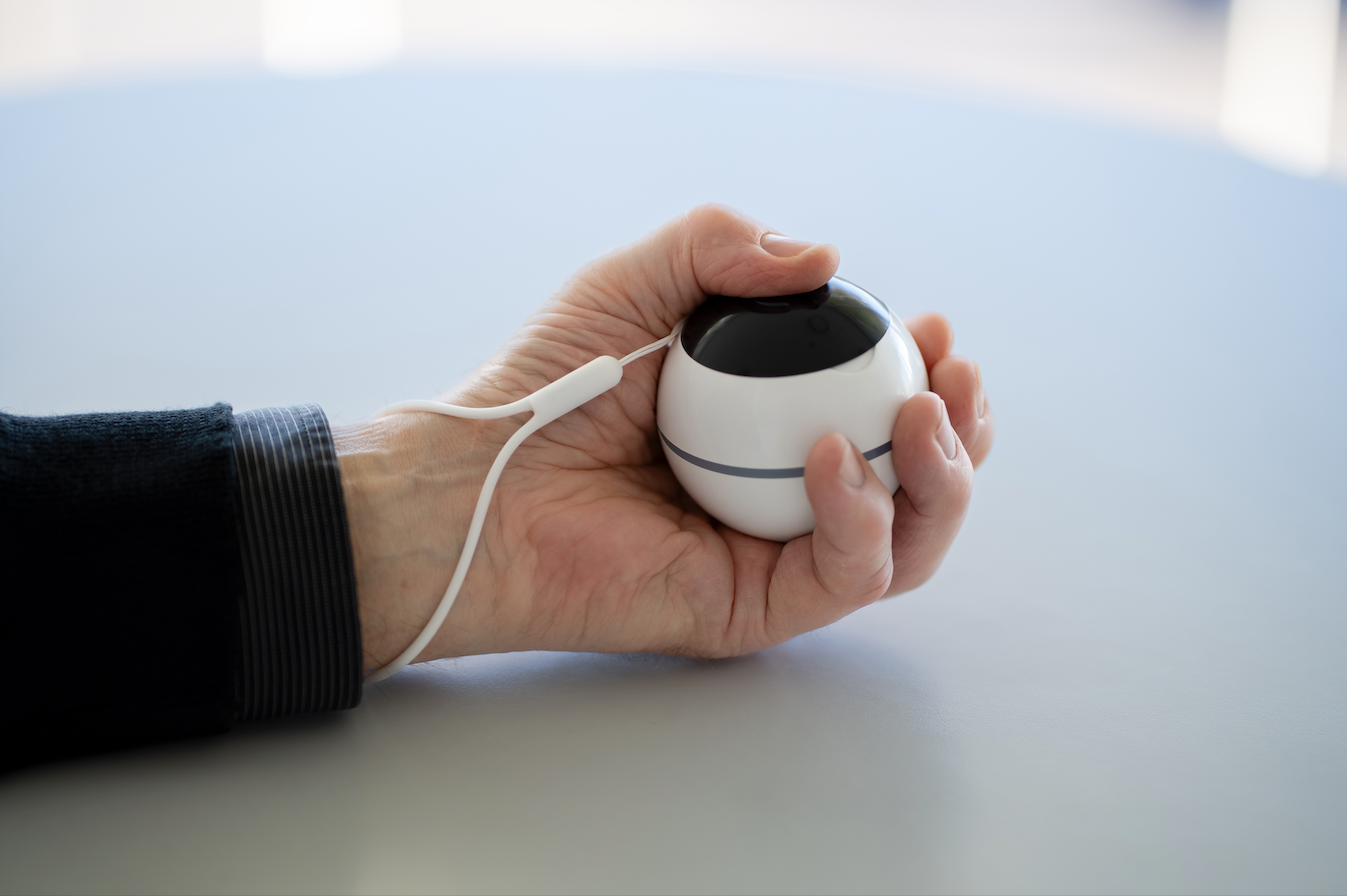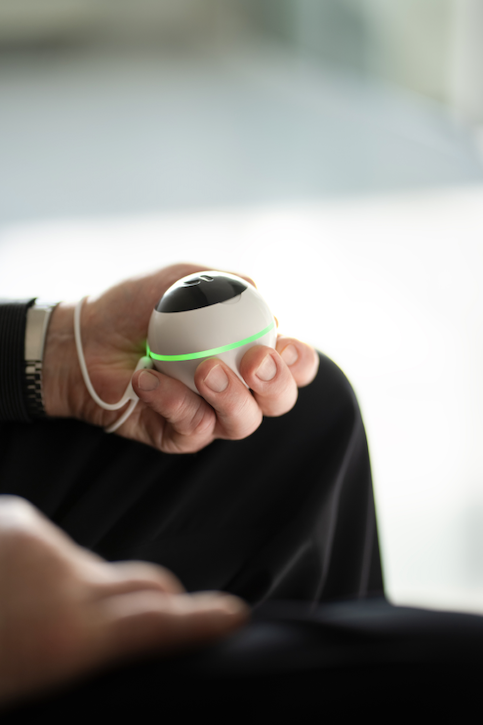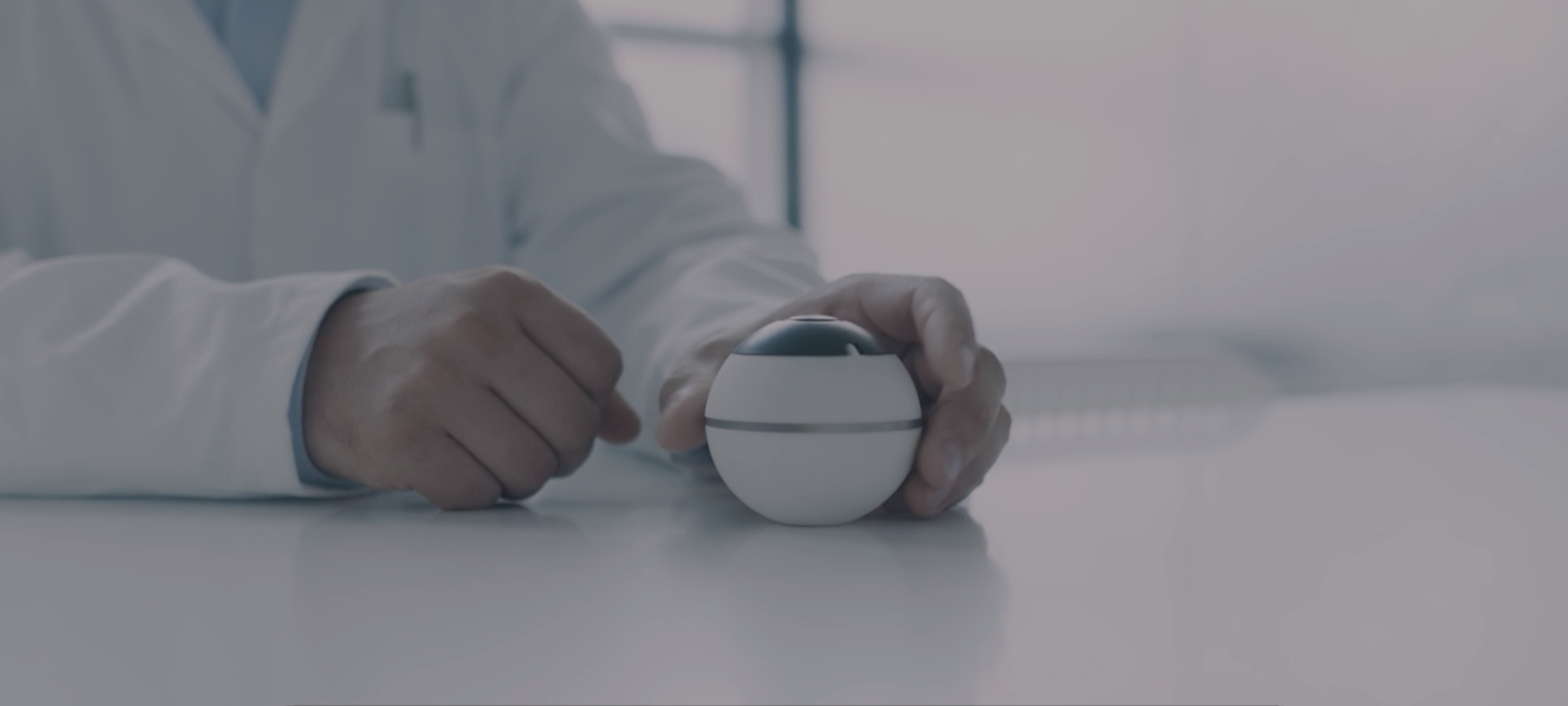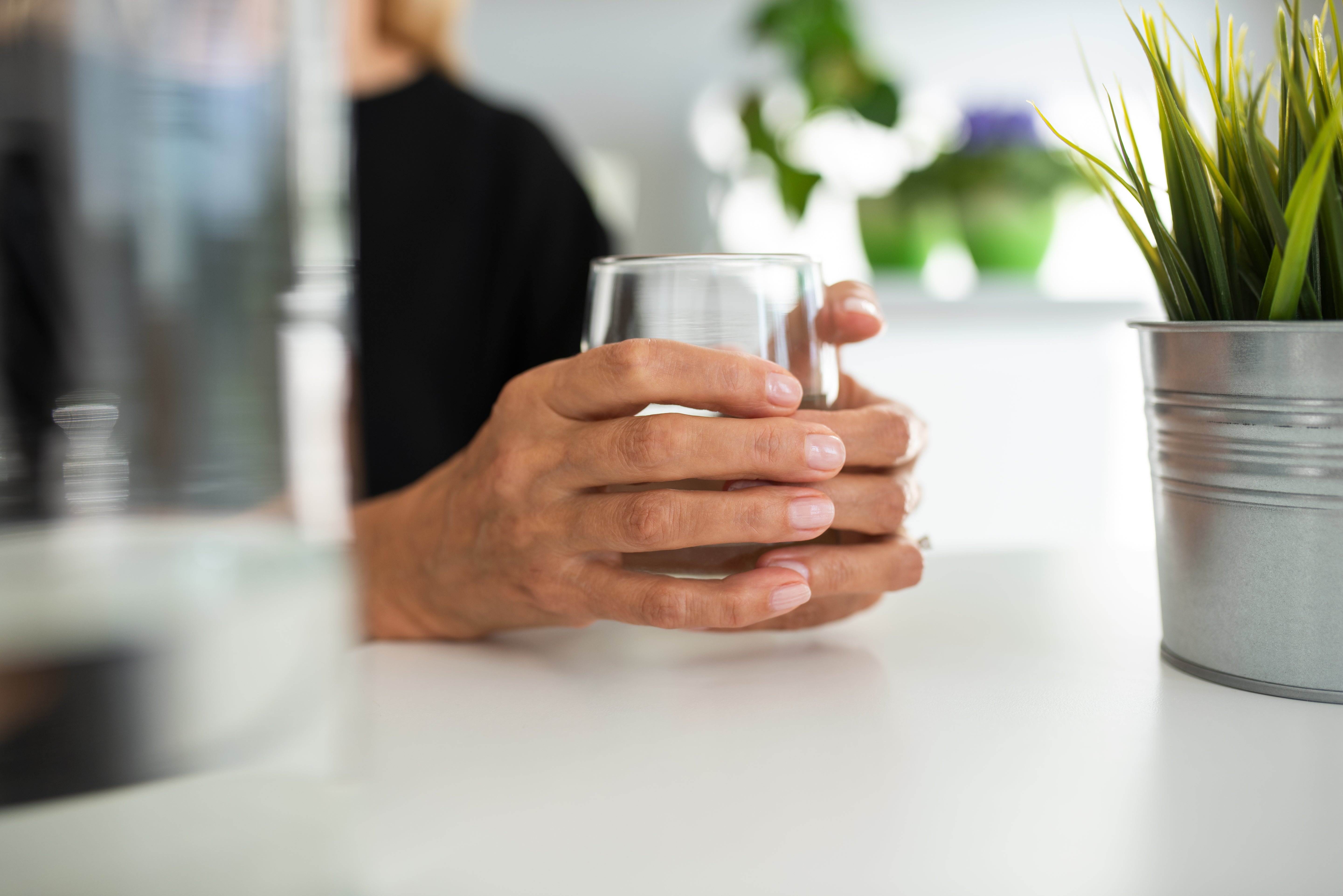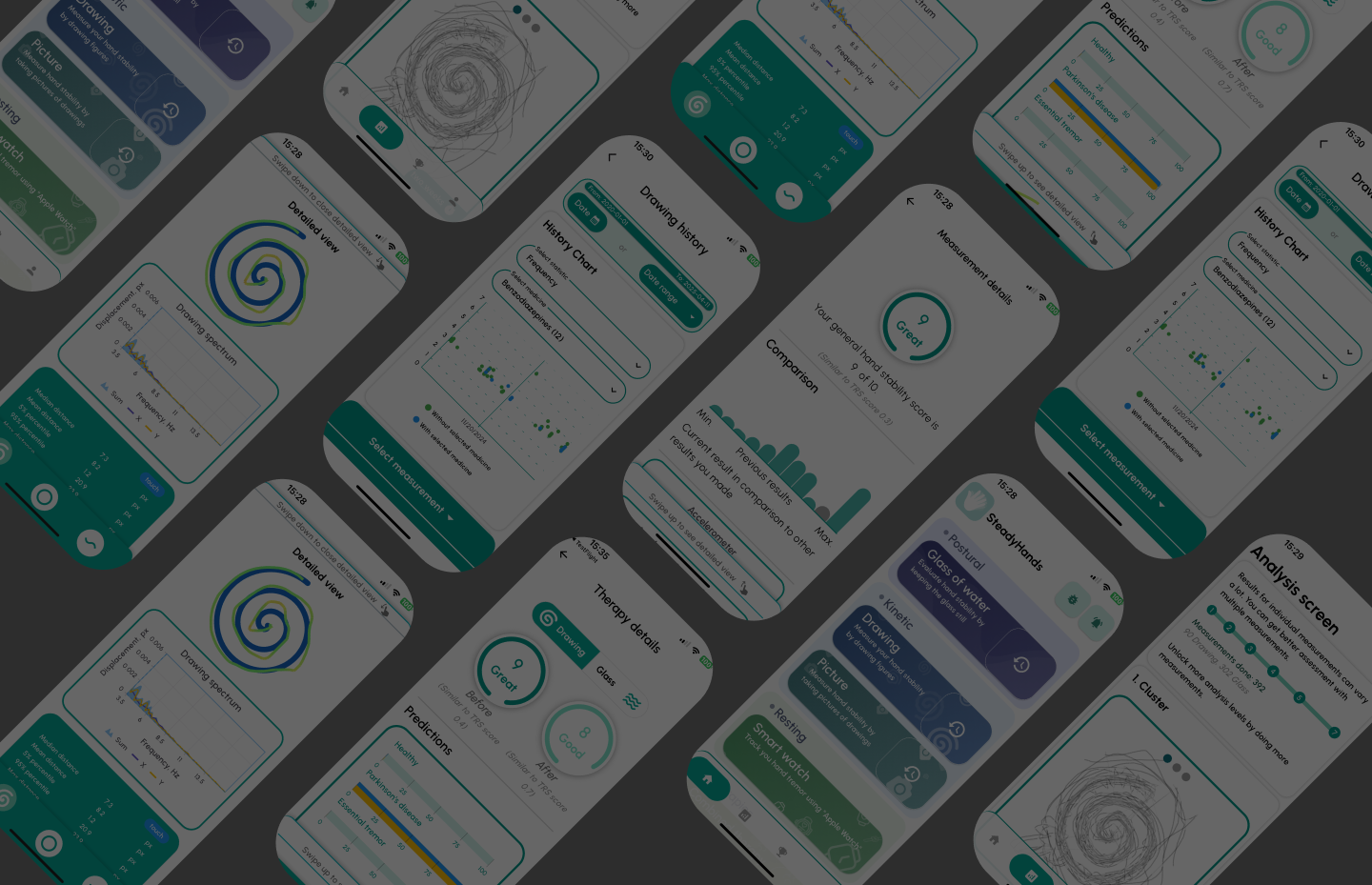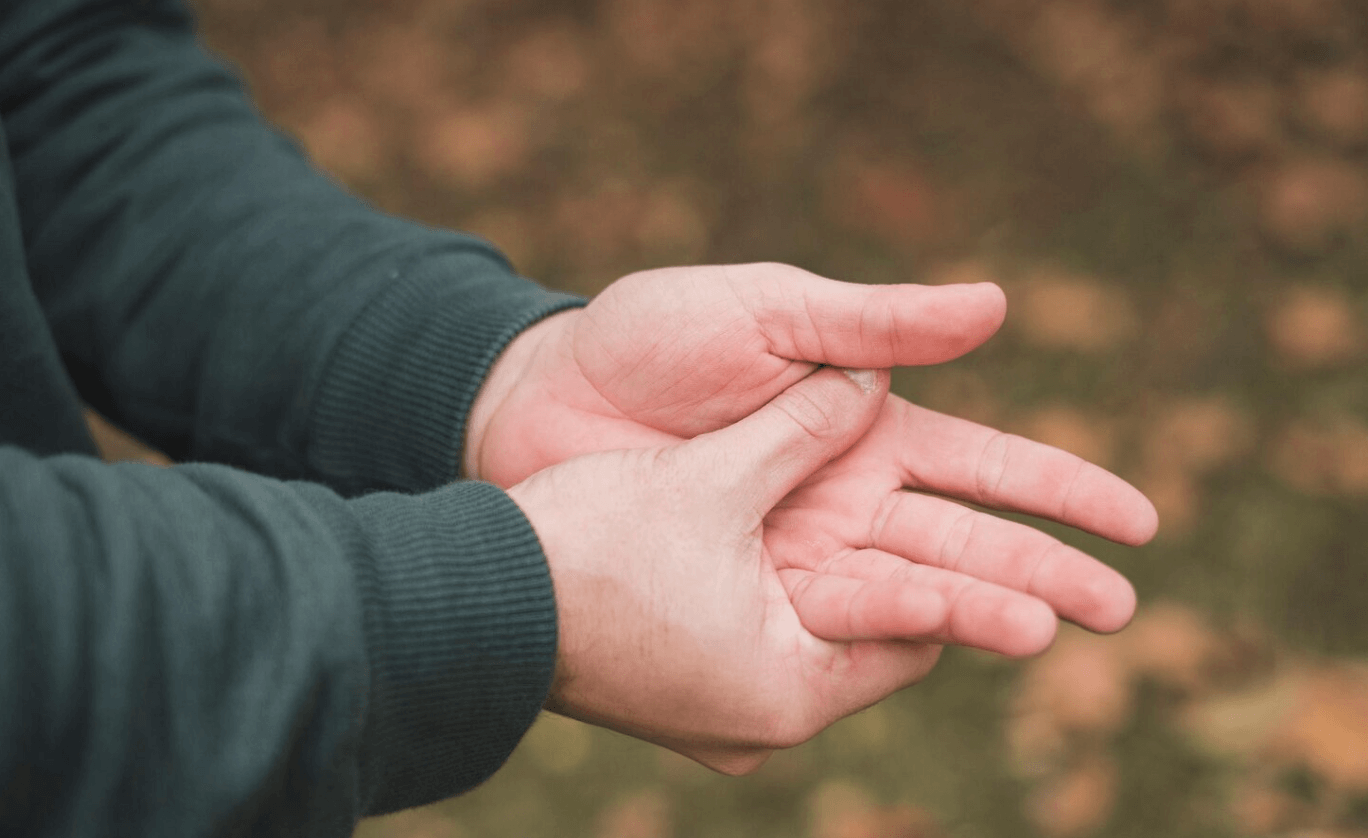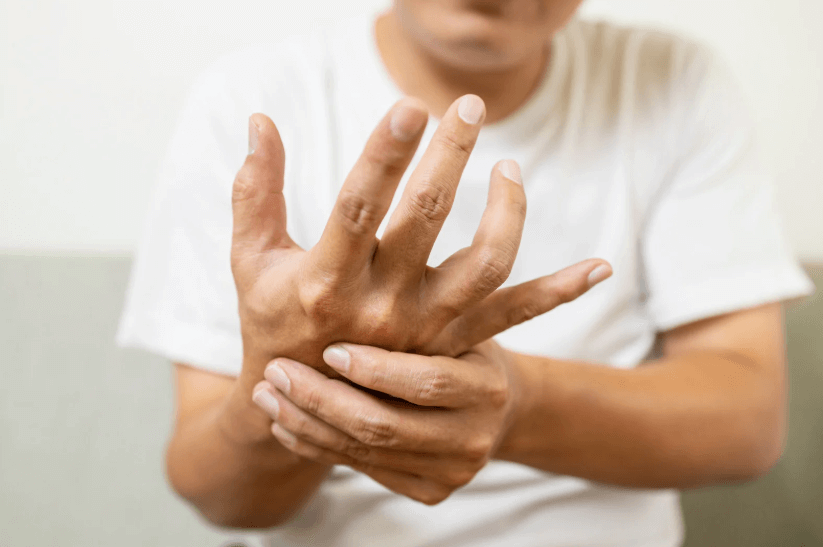Our partners
Personalized just for You
VILIM ball is a next-generation, non-invasive handheld medical device — the first and only CE-marked solution specifically developed to reduce hand tremors with advanced AI technology. Its smart algorithms analyze each user’s tremor and personalize therapy in real time.
Built for people with Essential Tremor and Parkinson’s-related hand tremors, VILIM ball offers a modern, personalized approach to tremor management.
How does it work?
VILIM ball is more than just a vibrating ball — it’s based on neuroscience, created with the help of medical experts, and supported by scientific research. It provides on-demand relief for people with Essential Tremor and Parkinson’s-related tremors, helping them do everyday things like eating, writing, using a computer, and more with greater ease.
The device uses AI-controlled safe vibrational therapy to interrupt the neurological loop, with sensors that monitor tremor levels and personalize the therapy for optimal effectiveness.
Real Users. Real change.
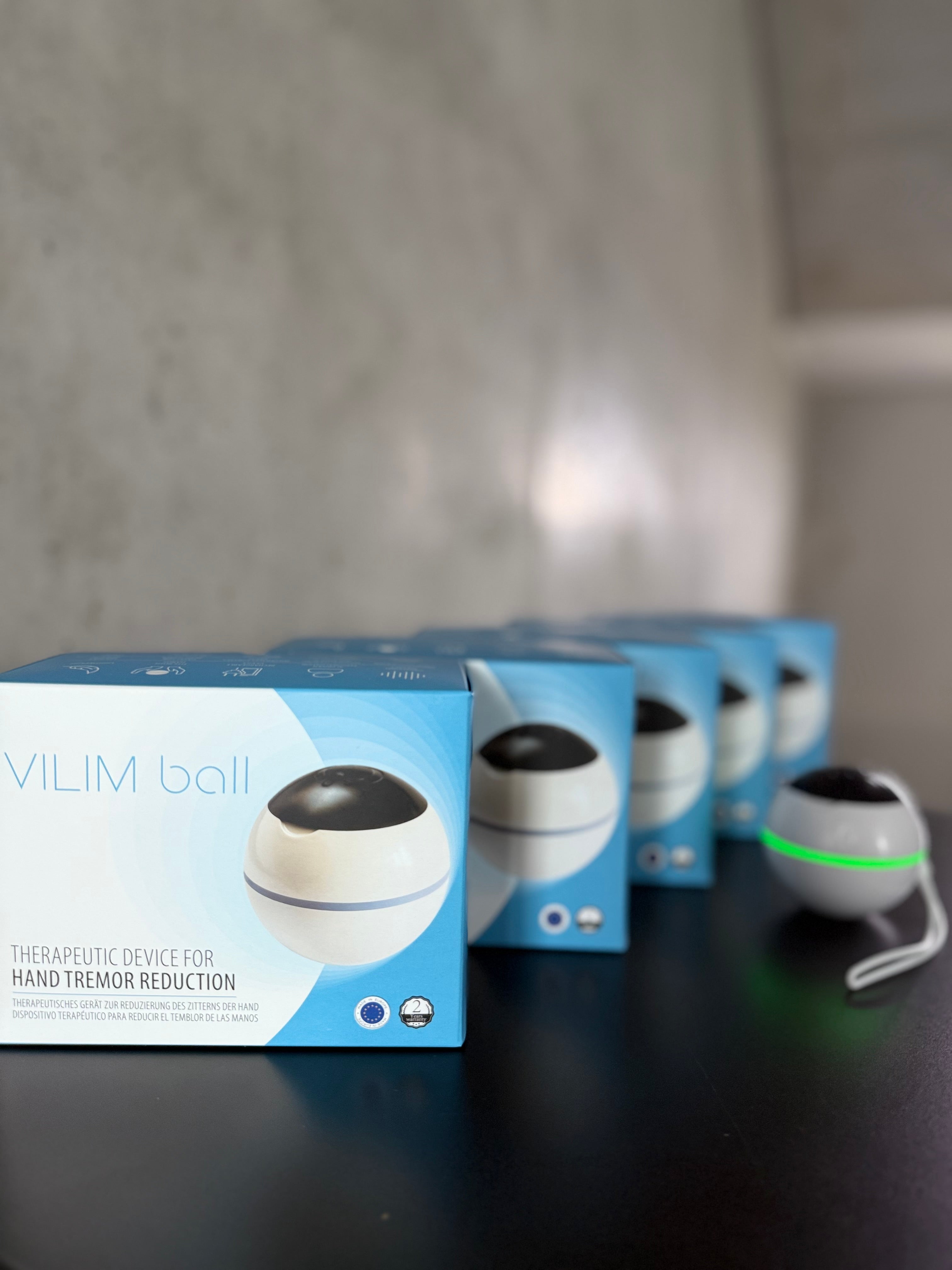
Science-backed therapeutic device
Its mechanism is grounded in neuroscience: by delivering rhythmic pulses to the hand, it helps calm the erratic nerve signals that drive tremors. This effect, known as sensory gating, has been observed in lab settings and supported by clinical studies and real-world user data. Whether through controlled trials or everyday use, the evidence consistently shows that the VILIM ball can offer meaningful, drug-free tremor relief—safely and reliably. Below, you’ll find the key studies and findings that prove how and why it works.
Feel the Difference
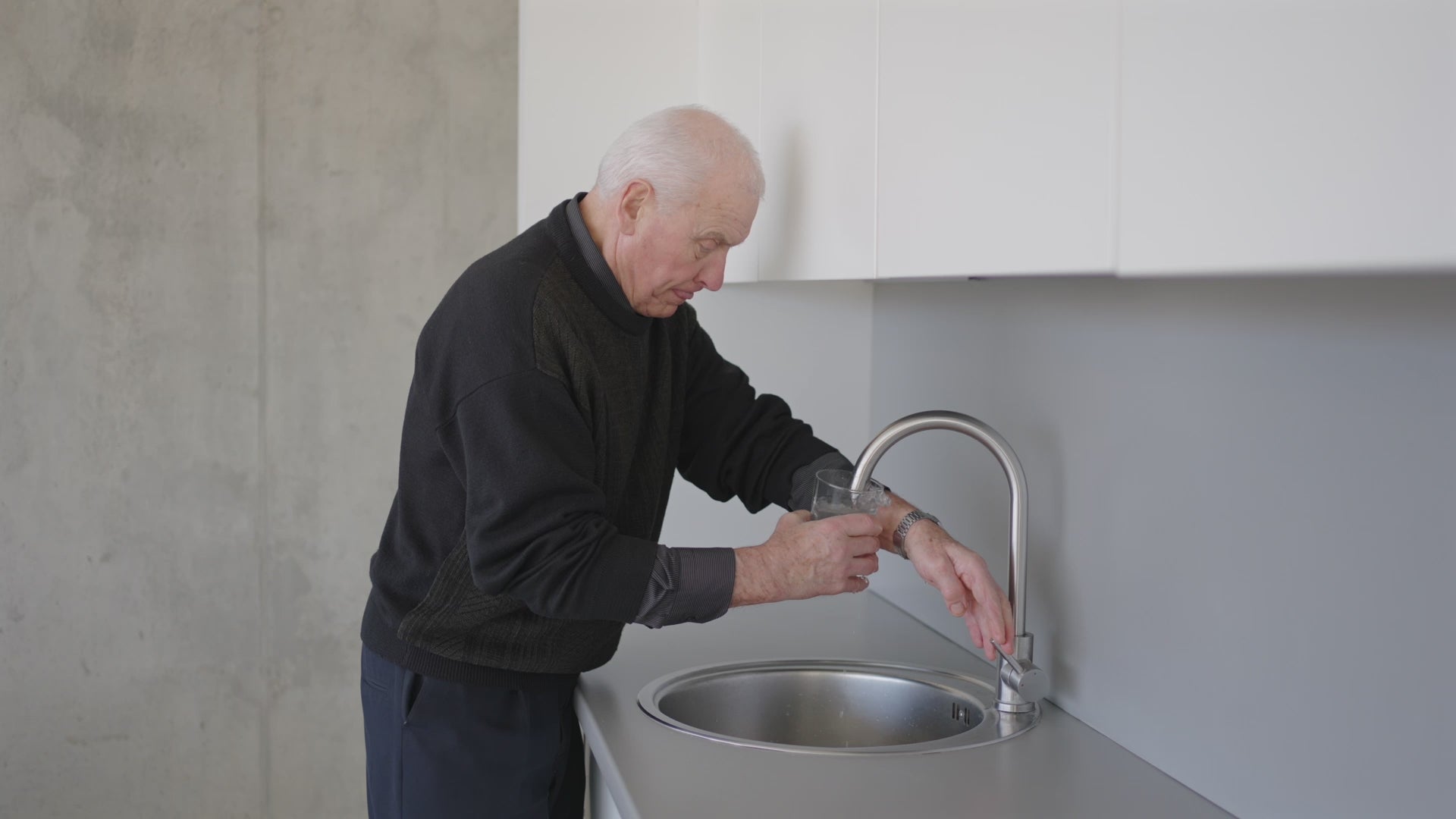
Before
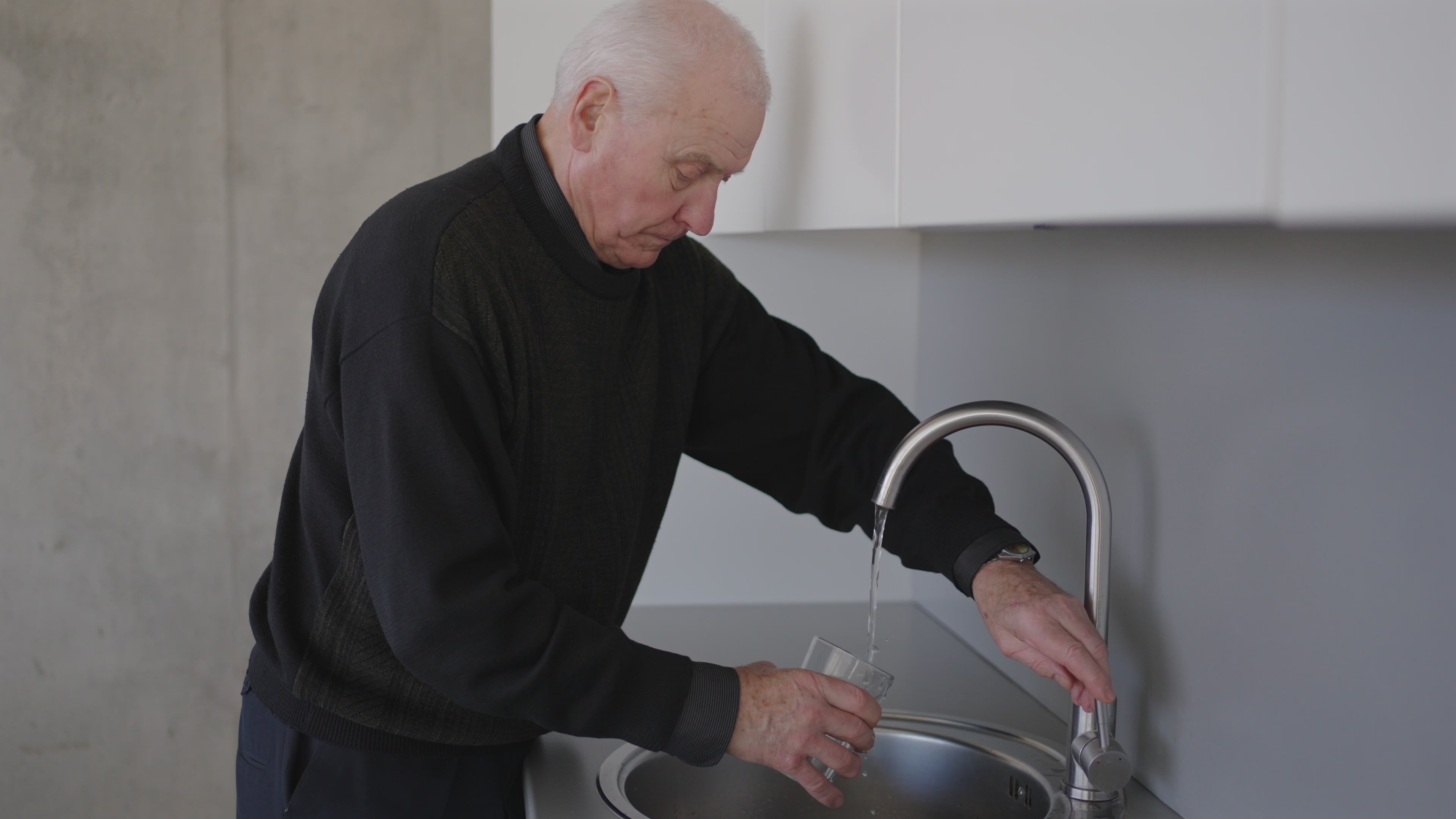
After
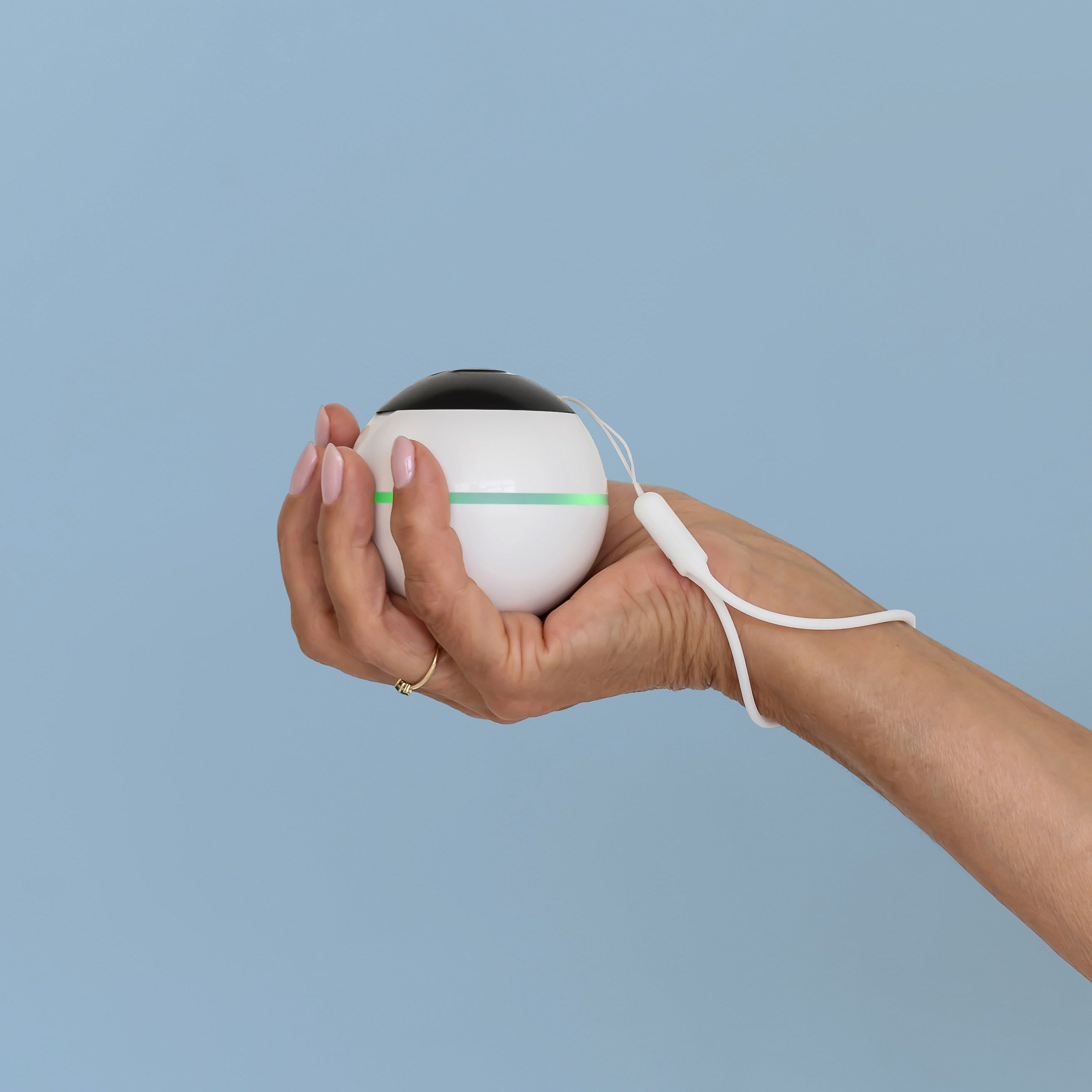
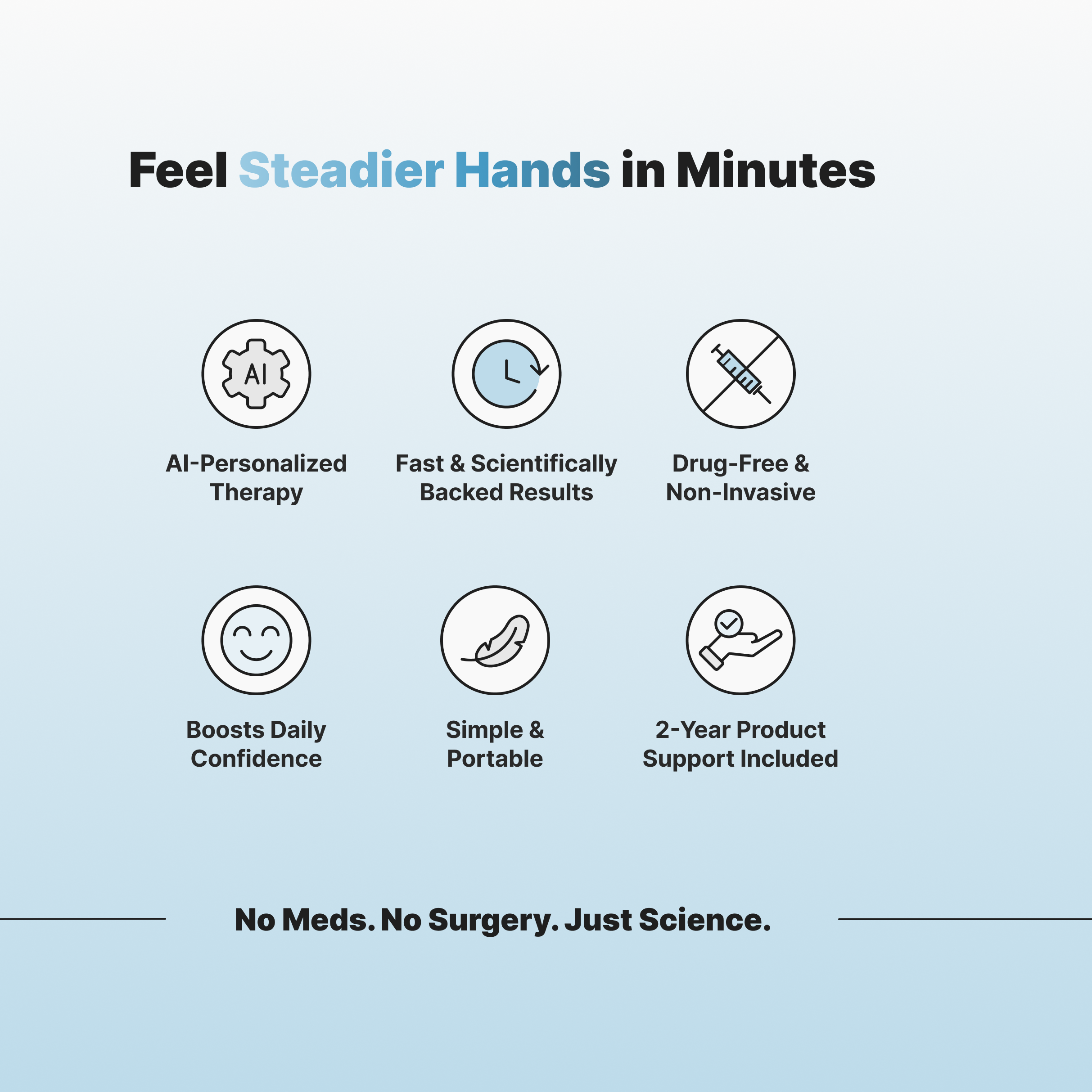
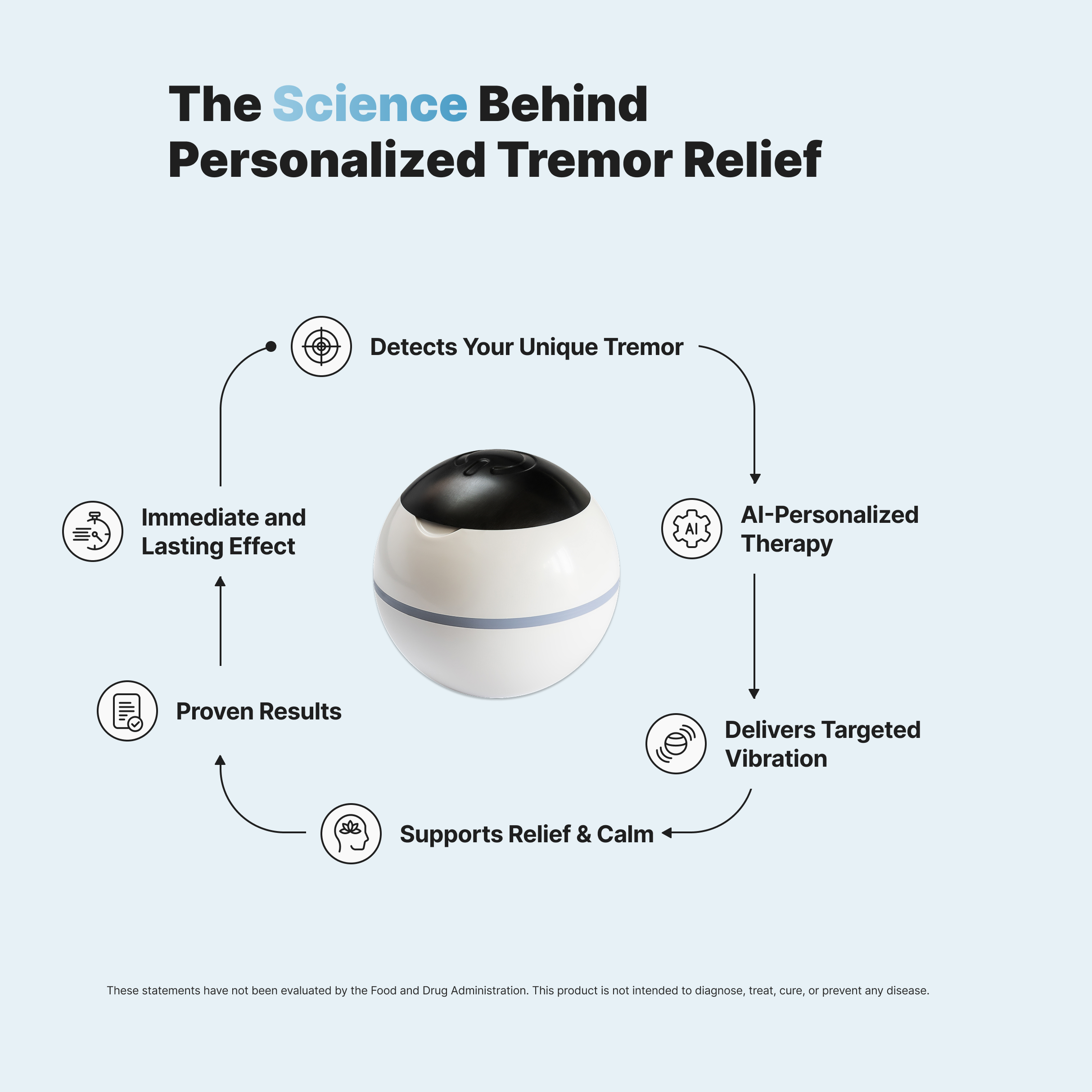
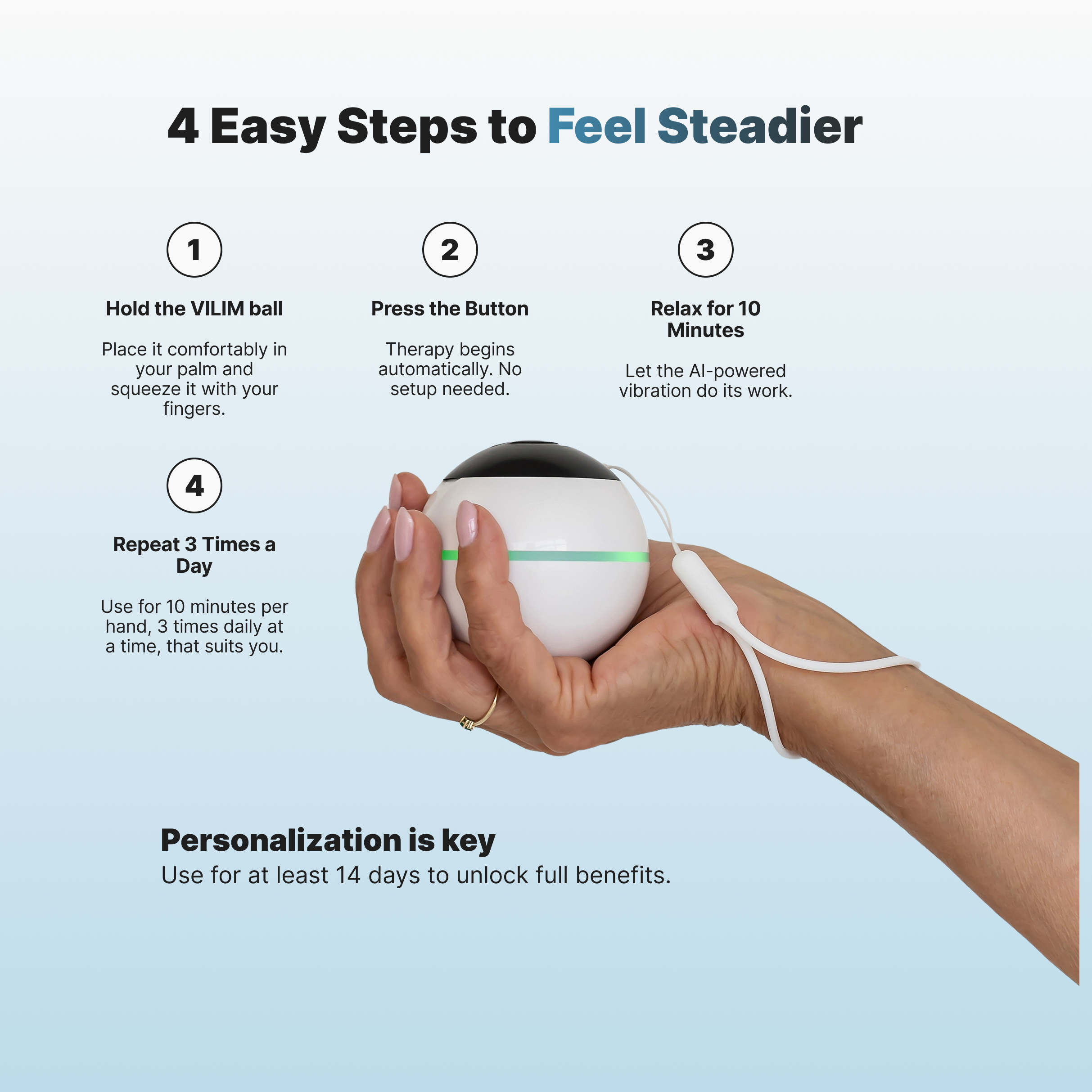
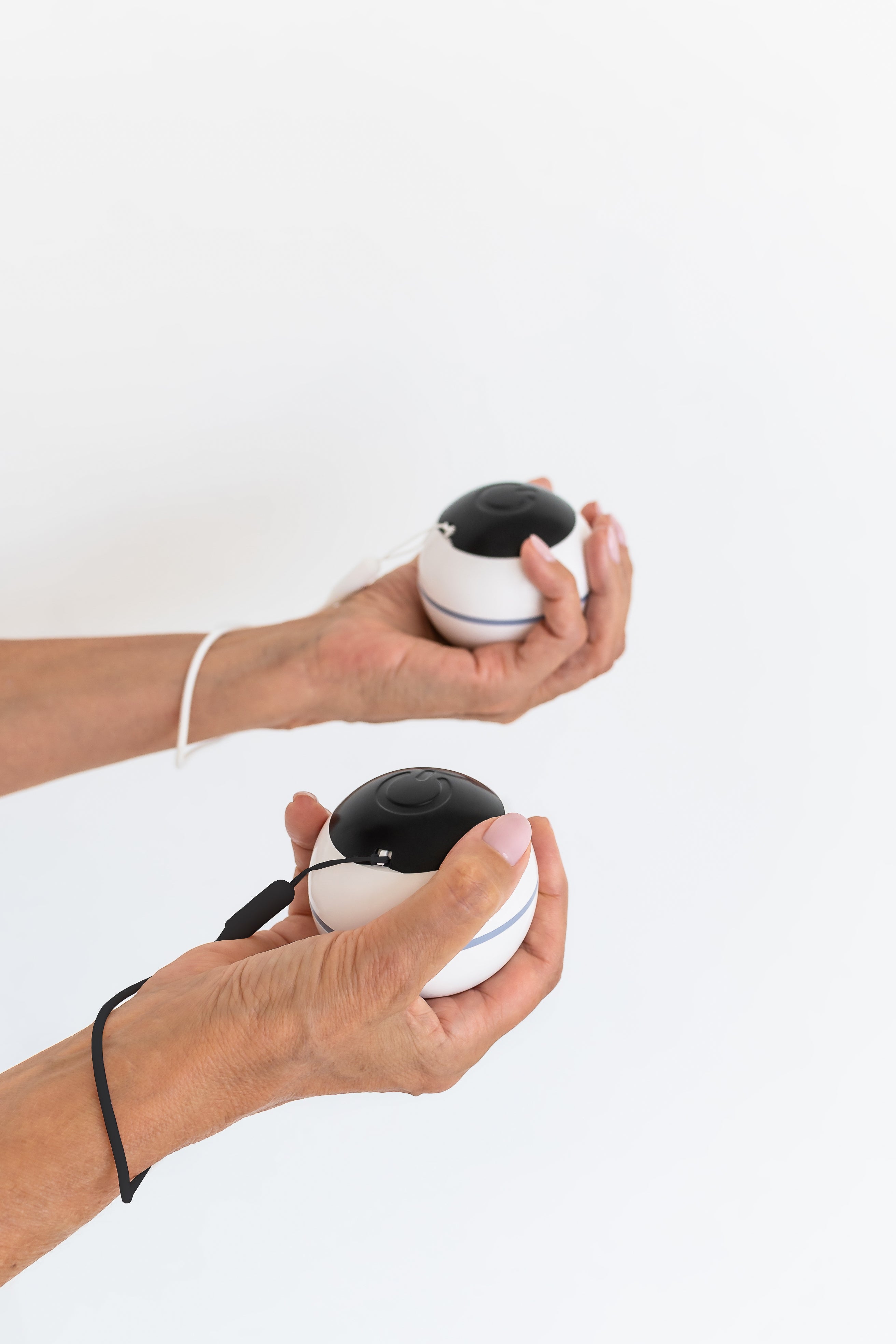
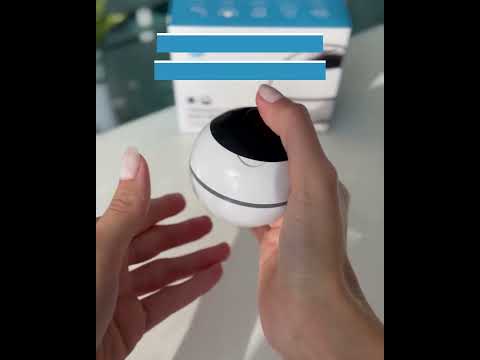
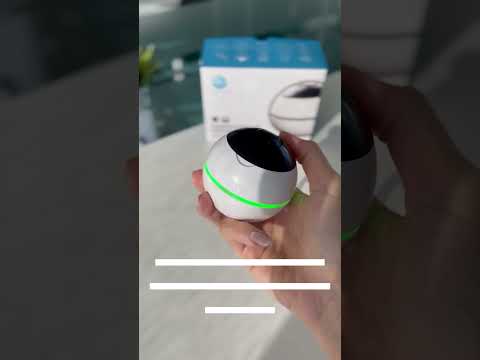
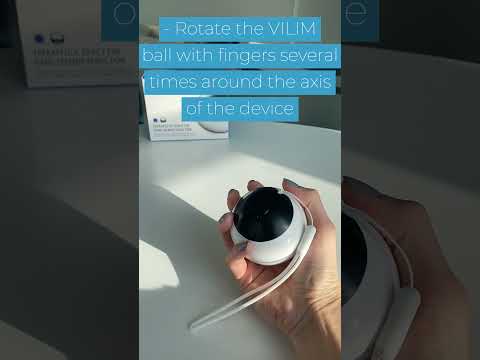
Product highlights
CE0197
Safe vibrations
Reduces tremors
Charger
After 10 minutes
Up to 4 hours
70mm (diameter)
120g
Up to 6 months on stand by after one charge
Tailored to you
Easy to use
And drug free
Fits both hands
No batteries needed
Tremor Relief Ball for Essential Tremor & Parkinson’s – VILIM ball by Vilimed
Reduce hand tremor with a handheld medical device that delivers neuromodulation therapy, offering temporary relief for patients with Essential Tremor and Parkinson’s disease.
Accessories are included with the product, but if you’d like extras:
It is important to read “Contraindications and precautions” before purchasing the device. This information can be found in the Instructions for Use below: INSTRUCTIONS FOR USE It is not recommended to use the device without a doctor’s permission in the presence of at least one of the listed symptoms.
Steady Hands app Premium 90-days free trial!
This app can:
- Track objective response to treatment between appointments
- Back up your diagnosis with AI - powered analysis
- Practice hand coordination and calming techniques in one place
Product highlights
CE0197
Safe vibrations
Reduces tremors
Charger
After 10 minutes
Up to 4 hours
70mm (diameter)
120g
Up to 6 months on stand by after one charge
Tailored to you
Easy to use
And drug free
Fits both hands
No batteries needed
FAQs
What is the VILIM ball?
VILIM ball is a handheld therapeutic device whose purpose is to temporarily reduce hand tremor. Therapy gives Essential tremor (and possibly Parkinson’s disease) patients a relief from the symptoms for the time they need to perform ordinary-life tasks. 90% of those who tested VILIM ball, reported it as effective.
How does it work?
The device operates on the principle of stimulating hand nerves via mechanical vibration therapy. The artificial intelligence algorithm analyzes hand tremors and adapts the therapy to each patient individually.
How to use the VILIM ball device?
Sit comfortably and rest your hand on a stable surface. Take the device in your palm and give it a gentle squeeze. Press the black button cap. A green light indicates that therapy is in progress.Therapy lasts 10 minutes, and the device stops automatically. Use the device every day before daily tasks—up to 30 minutes per day per hand.
Use the device on both hands three times a day, at a time that suits you.You must use it for at least 14 days before it becomes personalized—tuned just for you!
Can I use theVILIM ball for both hands?
Yes, if the tremor is similar in both hands, you can use one device.
Can different people use the same VILIM ball device?
The VILIM ball device performs artificial intelligence based personalization. It adapts to each person’s hand tremor properties individually. As a result, one VILIM ball should not be used by more than one person.
Latest Stories
Why Do My Hands Shake? Hand Tremor Causes, Types & Treatment
Noticing shaky hands can be unsettling—but most tremors are manageable. This guide explains rest vs. action tremors, everyday triggers versus medical causes, red flags and diagnosis, and practical ways to steady your hands—from lifestyle tweaks and medications to specialist procedures and non-invasive devices like the VILIM ball.
Finger Twitching vs. Tremors: Causes, Symptoms & When to Worry
Unsure if your finger is just twitching or it’s a true tremor? This guide explains the key differences, common triggers (stress, caffeine, overuse), medical causes to rule out, when to see a doctor, and practical ways to steady your hands—plus how therapy, medication, and assistive devices can help.
Non-Essential vs Essential Tremor: What’s the Difference?
What is non-essential tremor? We explain types (resting, postural, kinetic/intention), key causes, diagnosis, and when to see a doctor—plus practical tips for daily life.
